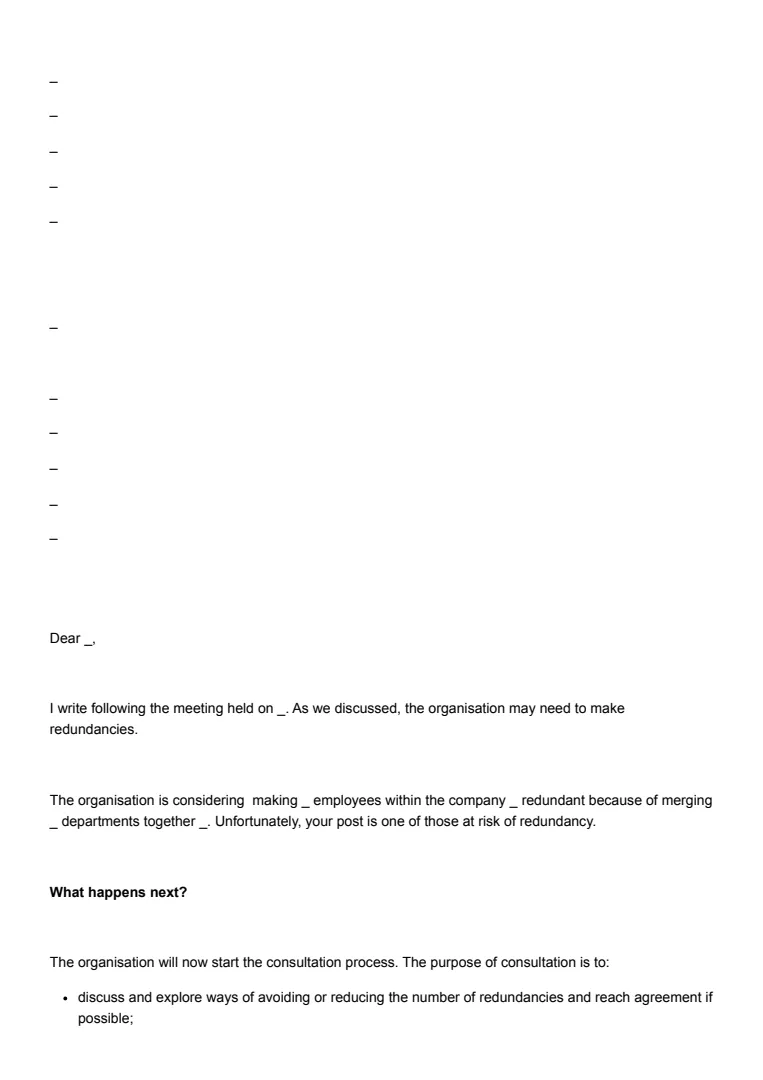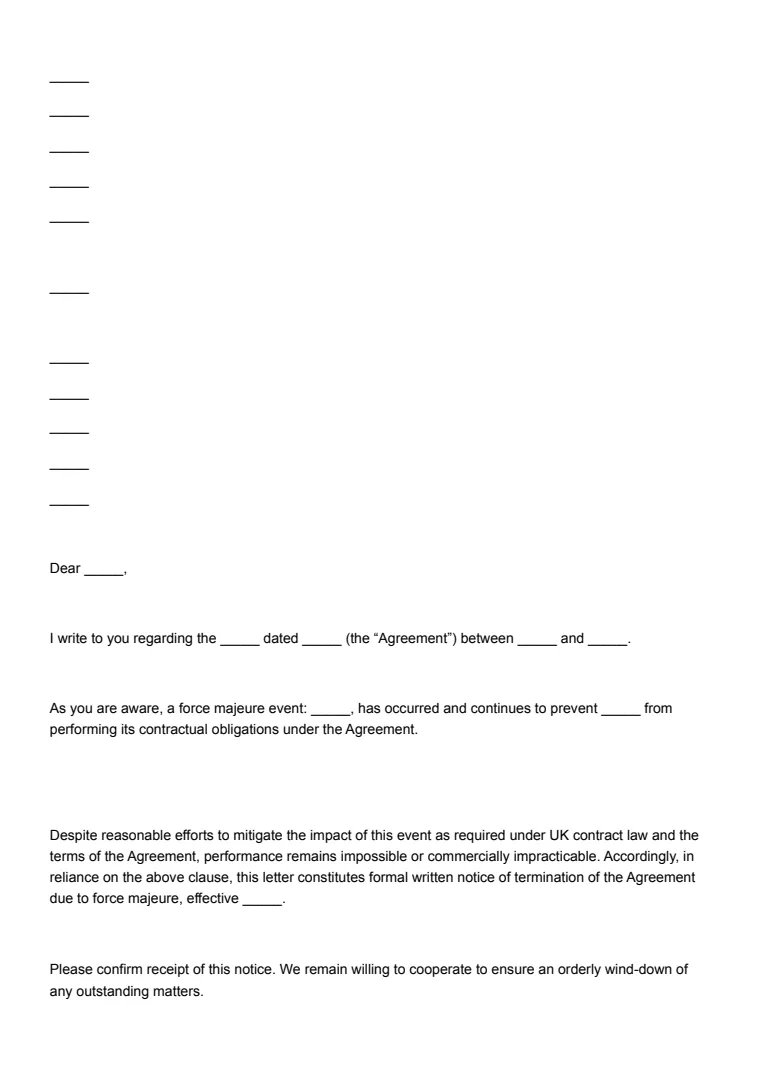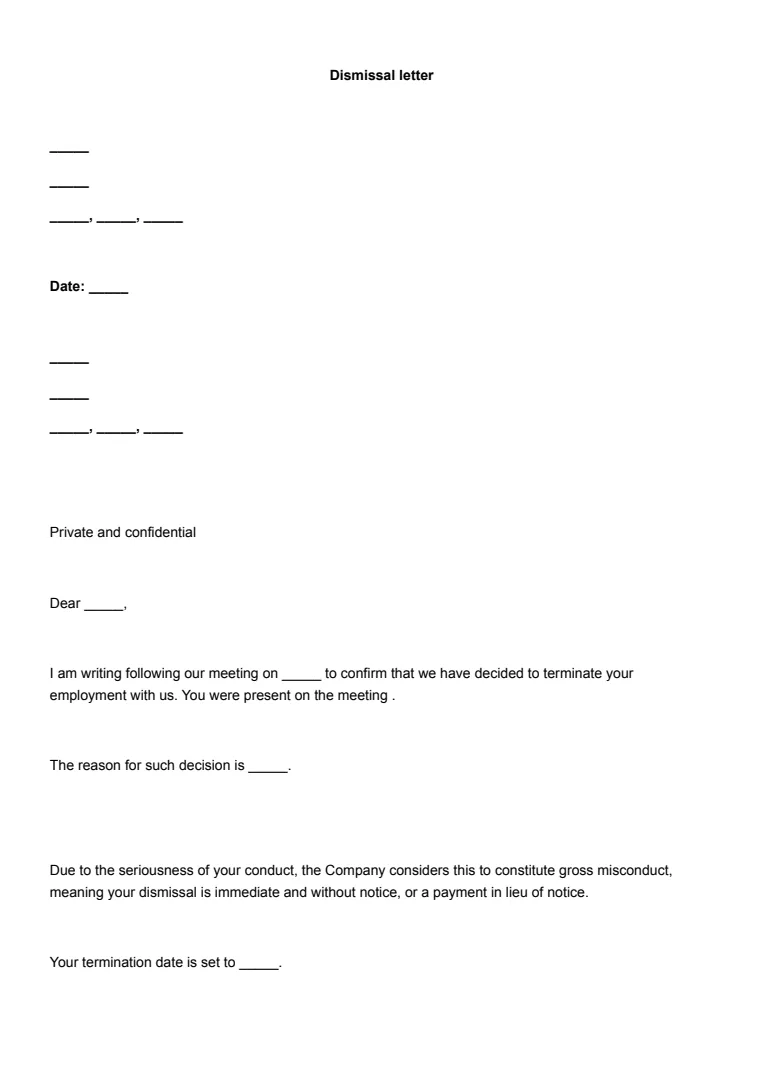What Is an at Risk of Redundancy Letter?
An at risk of redundancy letter is a written notice you might get from your employer if your role is potentially being made redundant. It doesn’t mean you’ve lost your job, but it does mean your position is under review.
You’ll receive this letter to tell you that your role is at risk of redundancy, meaning it’s the early stages of a redundancy situation and the start of a formal consultation process.
This process is typical for both individual and group redundancies.
The key points usually covered in the letter are:
- The reason your job is considered at risk
- An explanation of the redundancy situation
- Details about the selection criteria
- The planned process for consultation
Here’s a short example of what you might see:
“We are writing to inform you that your role is at risk of redundancy due to recent organisational changes. No decisions have been made, and we want to consult with you directly about the possible impact.”
You may also see details about a meeting to discuss your situation and have the opportunity to ask questions or suggest alternatives. The company is supposed to provide you with enough information so that you can understand why you’re at risk and what might happen next.
When Is an at Risk of Redundancy Letter Needed?
If you’re an employer, you should send an 'at risk of redundancy' letter as soon as employees’ jobs might be affected by changes, such as operational shake-ups or rising business costs.
It’s a legal step if you’re considering making changes that could lead to redundancies, either compulsory or part of a wider restructure.
A letter is also required if the company is entering a collective redundancy process, which typically involves 20 or more roles at a single location within a 90-day period.
In this case, informing employees early and clearly is key.
Typical situations where an at risk letter is used include:
- A decision to close a department
- Restructuring the business due to decreased profits
- Major shifts in operational needs or processes
- Trying to cut business costs significantly
As an employee, your employer should give you this letter before any final decisions or notices are made. This ensures you’re properly informed and can take part in consultations about your future.
How to Write an at Risk of Redundancy Letter
If you’re an employer who needs to inform employees that their jobs are at risk, you can follow these steps to write a clear risk of redundancy letter.
Step 1: Include Employee Details at the Top
Begin by clearly identifying the employee’s details at the top of the letter, including their name, job title, and workplace address.
This helps you maintain a professional tone and avoid confusion with other redundancy letter templates.
Step 2: Write a Clear and Polite Opening
Ensure you use a polite yet direct opening. Begin by stating the purpose of the letter.
Let the employee know they are at risk of redundancy. Use straightforward language to avoid unnecessary misunderstandings.
Step 3: Explain the Reason for the Redundancy Risk
Explain the reasons behind the redundancy risk. Outline the factors or business circumstances leading to this situation.
For example, you might mention financial challenges, restructuring, or changes in business needs.
This step provides context, helping the employee understand the rationale behind the decision.
Step 4: Outline the Next Steps and Consultation Process
Set out the next steps clearly.
Inform the employee about any planned consultation meetings, including dates, times, and locations.
Let them know who will be present and offer the opportunity to ask questions. Additionally, specify the timeframe for the redundancy process to ensure expectations are properly managed.
Step 5: Discuss What Happens After Consultation
Inform the employee about the next steps after the consultation.
Explain any available options, such as redeployment opportunities or support with finding alternative roles.
Step 6: Close the Letter Supportively
Close the letter in a supportive and respectful manner.
Offer to answer any questions and provide clear contact details for further information.
Sign the letter and use an appropriate closing statement.
Step 7: Consider Using a Redundancy Letter Template
If you want to save time and avoid mistakes, consider using a redundancy letter template.
You can download an at-risk of redundancy letter template from a trusted website. Ensure the template suits your specific situation before sending it out.














